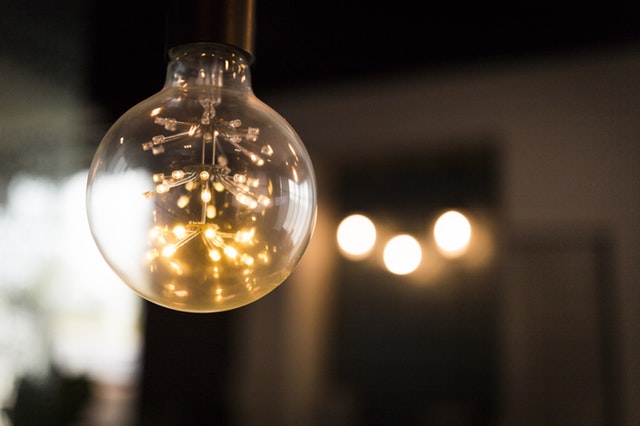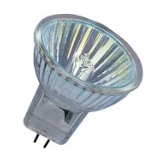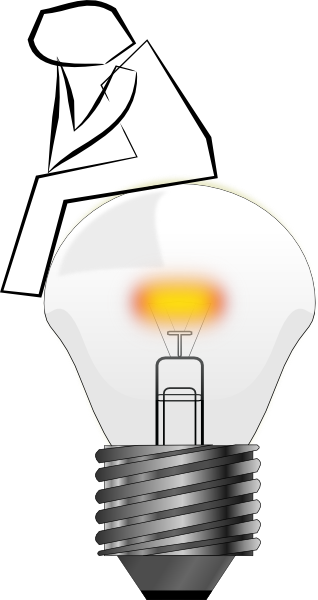LED-lighting: the energy-saving solution for your cooker hood!
Heard of LEDs? But don’t know much about this type of light, perhaps? Yet somehow you are convinced that they are a good thing, that they:
- work better than previous solutions,
- provide warm, cosy light,
- save energy?
If this is you, then read no further, you’re right! Go directly to our online comparison site and choose your new cooker hood with LED. But if you’d like to know more about LED and cooker hoods, then please continue reading. If you are a LED expert or an extractor fan manufacturer, we invite you to click here.
LED, halogen or incandescent light bulb?
Since 2010, LEDs (light-emitting diodes) have been increasingly used as light sources in cooker hoods. According to our estimates, at least 75% of hoods will be equipped with LEDs by 2020 (the same ratio as for cars).  LED-lights are durable: on average they have a lifespan of at least 10,000 hours or approximately 30 years with one-hour daily use. However, according to tænk.dk (the Danish equivalent of “Which”), the expected lifespan of a LED will be shortened by up to 50% if the lamp is on for more than 4 hours and the temperature inside the light source increases beyond a certain level! This could clearly be a concern for cooker hoods!
LED-lights are durable: on average they have a lifespan of at least 10,000 hours or approximately 30 years with one-hour daily use. However, according to tænk.dk (the Danish equivalent of “Which”), the expected lifespan of a LED will be shortened by up to 50% if the lamp is on for more than 4 hours and the temperature inside the light source increases beyond a certain level! This could clearly be a concern for cooker hoods!
In the early days, extractor fans were fitted with incandescent bulbs, traditional 15, 25 or 40W light bulbs. In the best-case scenario, this kind of lightbulb lasted 1,000 hours (three years at one-hour daily use).
But incandescent bulbs’ high energy consumption led to the fluorescent lamp – neon lights – becoming a popular alternative, in spite of their colder light colour. But for cooker extractor fans, the size of the neon tubes together with environmental concerns (mercury), made this solution less attractive.
The halogen light introduced in the 90s was for some time considered a viable solution with its lower energy consumption, and fairly strong natural light (around 2700 Kelvin, like light bulbs). Their only downside at the time was that the 12V transformer that was required, took up a bit of space. Small halogen bulbs have an average lifespan of up to 2,000 hours i.e. 6 years at one-hour daily use, but this can vary hugely.
Halogen bulb phase-out (September 2018)

From September 1st, according to EU-Regulation 1194/2012, shops may only sell their existing stock of directional halogen bulbs. We are talking about two categories of halogen lights: standards such as MR11, MR16 and AR111, and reflectors such as PAR16, PAR20, PAR30, PAR38, R50, R63 and R80.
However, it is not a total ban. The more specialised non-directional halogens such as G4, R7 and G9 are still allowed to be sold. EU-Regulation 244/2009 only states that they will be phased out at a date yet to be determined.
So, if your extractor fan lights your kitchen via halogen bulbs, don't panic! You can still buy them, at least until a sustainable alternative has been found.
→→→ Buy halogen bulbs and LEDs as well as lamp diffusers and covers right here! ←←←
WHAT IS LIGHT?
In order to understand what light is, we need to examine the following elements:
- Luminous flux (and luminous intensity)
- Colour reproduction/rendering
- Colour temperature
- Illumination efficiency
Luminous flux or power, understood to be the total light emitted by a light source and perceived by the eye as light, was previously measured in Watts. Today, this flux is expressed in Lumens (lm), although sometimes still alongside Watts, to describe the energy efficiency of the light unit. An old-fashioned 60W light bulb is the equivalent to a 11W LED light: both have a luminous flux of approx. 800 Lumens. When assessing how much a light source dazzles i.e. it’s intensity in a certain direction, we talk about its “brightness”, but this is not the same as its luminous flux.
Colour rendering (expressed in Ra) is the ability of a light source to restore the colour of an illuminated object, as compared with natural daylight (100Ra): it is a percentage comparison with daylight which is expressed as 'Ra'. LED-lights are gradually improving and becoming more and more harmonious and able to render natural colours, but they do still fluctuate in their ability to render colour quality (as do fluorescent lamps), while incandescent bulbs and halogen lights generally rate at 98Ra, minimum.
Colour temperature of light is expressed as Kelvin (K), where 0 is yellow-red and 11,000 is cold white (blue-white). For indoor use, the ideal is a colour temperature between 3-4,000 K. A neon light with a blue-white light has a much higher K value, over 5,300 K.
Illumination (lighting) of a cooking area by a hood is measured during tests and expressed as Lux (lx).
LED Facts
A LED consists of many light-emitting diodes (semi-conductors) of different colours, powered by a converter or a driver. Several questions arise:
- What is the lifespan of the individual diodes? Light intensity, or luminous flux, becomes less intense as the number of working diodes decreases.
- What degree of light reduction is acceptable? The manufacturer of the cooker hood has clearly chosen the specific LED for mounting in the hood and thus knows its expected lifespan (reflected in its cost). For how many hours is its luminous flux expected to remain as new – or just good enough? Is it still perceived as acceptable when it falls by 20%? This value, expressed by the letter L is rarely if ever disclosed on a hood data sheet. For example, L70 means that the luminous flux – e.g. after 10,000 hours – is reduced to 70% (assuming B = 50 and C<1 meaning that L70 represents an average and that early failures are not taken into account).
- How good is the quality of the transformer, i.e. the device that converts from 220V to 3.6V? Most often the transformer is integrated into the LED light source and so logically constitutes a potential weak point. The transformer’s reliability is thus essential to maximising the overall lifespan of the LED-light source.
- How good is the colour rendering? It would be easy for manufacturers to provide this information: 98Ra?
But some information we would like is even more complex. For example, we, the buyers of the hoods, would also like manufacturers to indicate whether the illumination from the LED-light source in our hood is centred or wide angled, and if the brightness of the light is likely to dazzle users who are not of average height.
FACTS ABOUT HOODS FITTED WITH LEDS
 Today, we – as consumers – have no idea if the lifespan of our hood is going to be longer than that of its LED-light, or vice versa! Nor do we know whether the LED-light can be replaced or, if it can, at what cost? In the user manuals, the wording is generally rather vague: “In case of LED failure, please contact the manufacturer's service centre”. Most inadequate advice!
Today, we – as consumers – have no idea if the lifespan of our hood is going to be longer than that of its LED-light, or vice versa! Nor do we know whether the LED-light can be replaced or, if it can, at what cost? In the user manuals, the wording is generally rather vague: “In case of LED failure, please contact the manufacturer's service centre”. Most inadequate advice!
Our wish list for cooker hood manufacturers:
- Use IEC 61591, p21, to measure and indicate the lighting capacity of a hood.
- Specify the luminous flux in Lumens (lm), which is already the reference unit of measurement and which is likely to become the only unit of measurement.
- Publish the percentage rate for L, the L-value, which is the light level at the end of the lifespan compared to the LED as new. And, of course, state the estimated lifespan of the LED-solution fitted.
- Indicate the estimated lifespan of the transformer (particularly if it is integrated).
- Use easily-replaceable LED-solutions so that consumers can replace the LEDs themselves.
- Provide Ra and Kelvin information. Both colour rendering and temperature are interesting to know.
- The angle of the light in the hood is important, and it would be nice to be able to adjust the angle when mounting the hood. The light of your new hood shouldn’t dazzle you as you cook! Some manufacturers recommend a relatively low mounting level of just 60 cm above the hob. If you mount the hood higher than that – which is often the case – will you risk being dazzled?
Measurements stated on LED data sheets are according to two standards IEC 62717 and 62722-2-1. We would really appreciate LED-light data becoming more transparent in terms of lifespan, for example. It is common (and legally compliant) that manufacturers do this test calculation based on LEDs having been lit for only 6,000 hours (as a minimum) and then extrapolate and thus estimate the L-value and lifetime in hours. When we talk about a potential lifespan of 10,000 hours, it seems relatively reliable to extrapolate from 6,000-hour results, but not if we are taking a potential lifespan of e.g. 30,000 hours.
However, our conclusion is clear. Currently, LED lighting is the best solution for cooker hoods but we hope that manufacturers will be inspired by this article to communicate more clearly about their chosen LED-solutions. After all, the LED-solution fitted to any given cooker hood is likely to become a major influence on purchasing decisions in the future!


